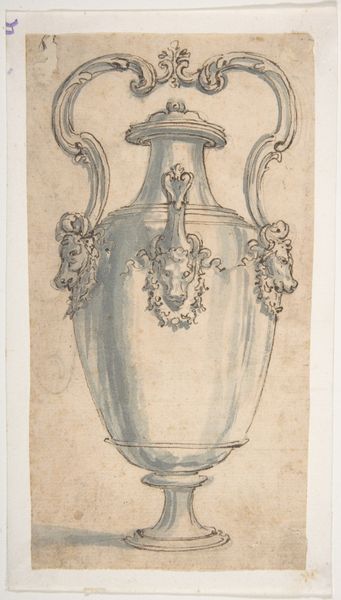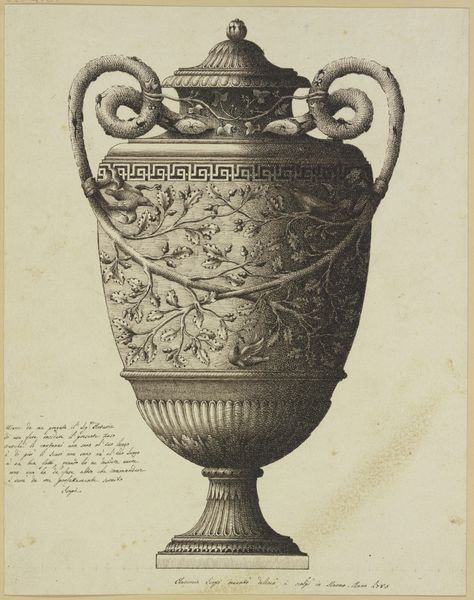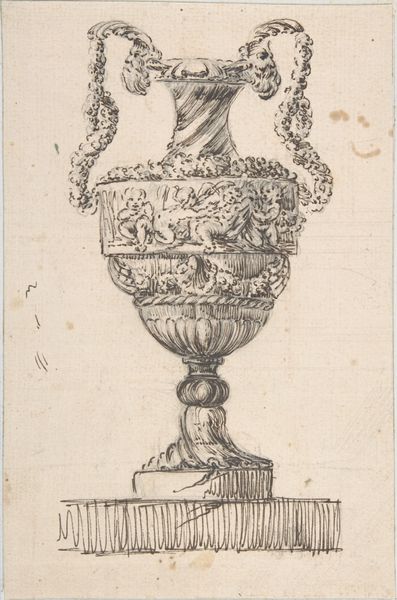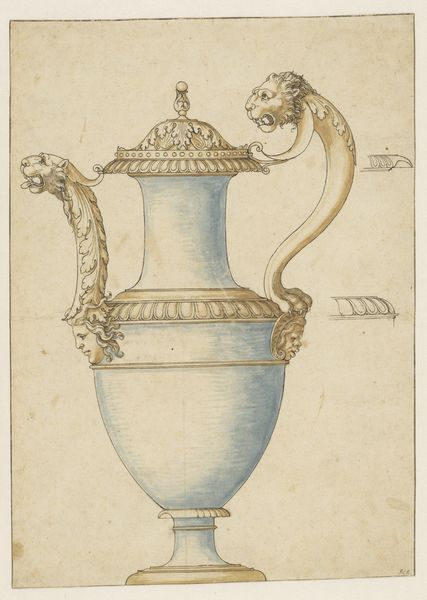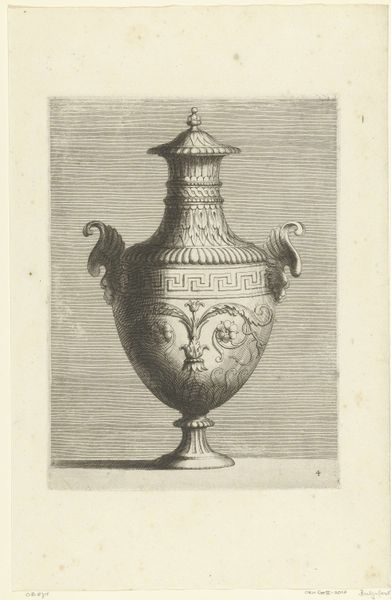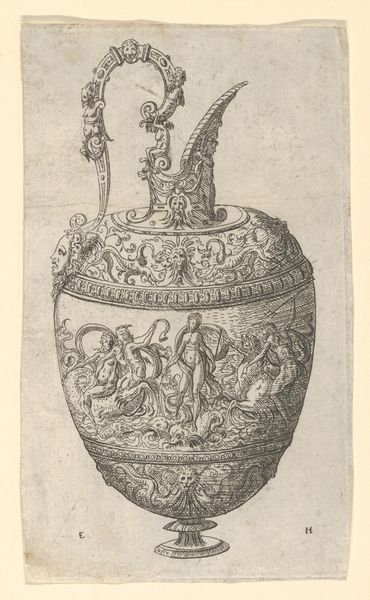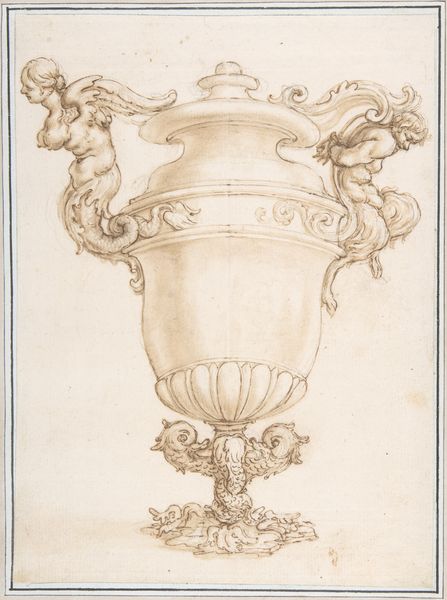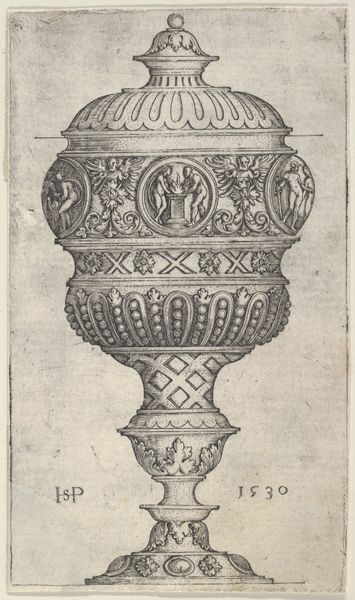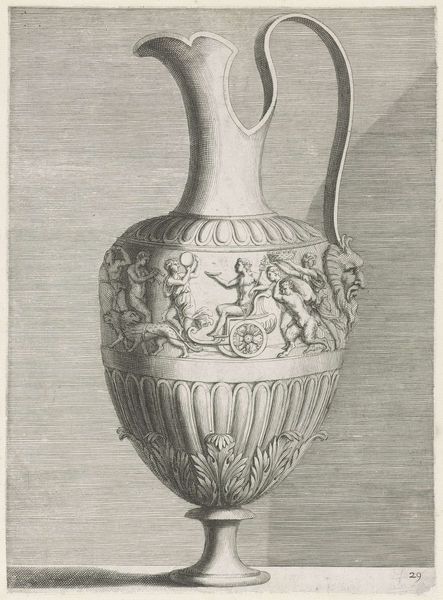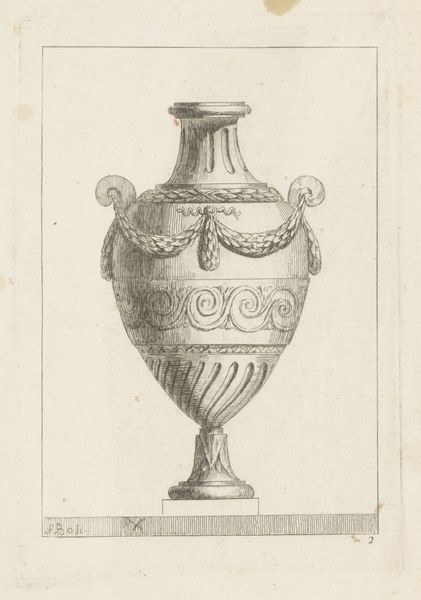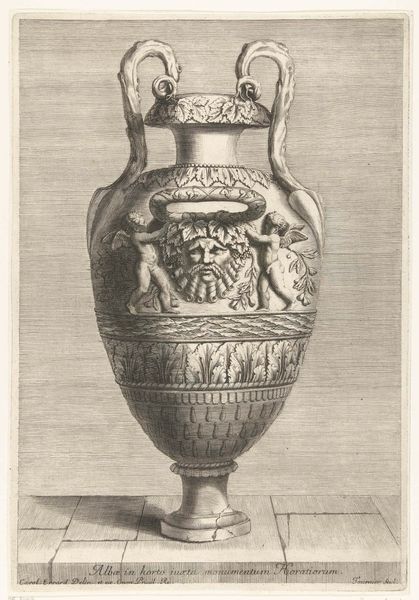
Design for a Vase with Hercules and Farnese Lilies
0:00
0:00
drawing, paper, ink
#
drawing
#
vase
#
mannerism
#
figuration
#
paper
#
form
#
11_renaissance
#
ink
#
pencil drawing
Copyright: Public domain
Editor: Here we have Francesco Salviati’s design for a vase, featuring Hercules and the Farnese Lilies. It’s an ink and paper drawing. I am immediately struck by how the serpentine handles ending in dragon heads clash with the classical figures on the vase’s body. How should we interpret these combined symbols, what are we to make of them? Curator: It's a fascinating question. What emotions do these dragon-like figures evoke within you when you consider them against the backdrop of Hercules, a symbol of strength and order? Do they suggest conflict, a disruption of harmony, or something else entirely? Remember, in the Renaissance, the classical world wasn't just copied, but re-imagined to serve new purposes, new ideologies. Editor: They feel intentionally jarring! There is such a huge tension between them that I think is there by design. It’s thought-provoking, but what could have motivated it? Curator: The lilies are key to that very motivation. They’re a blatant reference to the Farnese family, a powerful papal dynasty of the time. Think of the dragons as ancient power symbols, brought into alignment with a newer dynastic identity. The figures might function as an ancestor figure; the overall imagery seeks to align family status to ideals, an attempt to elevate that particular identity into legendary status, an effort to immortalize. What sort of emotional response do you think Salviati was hoping to create within a viewer? Editor: It’s beginning to make a lot of sense. So the aim isn't just decoration but to manufacture an almost palpable sense of awe and respect by referencing universally understood mythic stories. Thank you for this context, I'm rethinking how symbols function across cultures and eras. Curator: And I’m appreciating the deliberate, discordant harmony that informs so much Renaissance art. It’s not just pretty, it's potent with cultural significance.
Comments
No comments
Be the first to comment and join the conversation on the ultimate creative platform.
